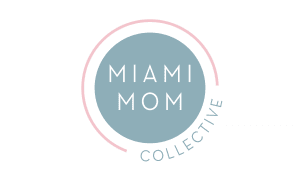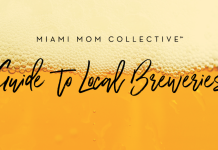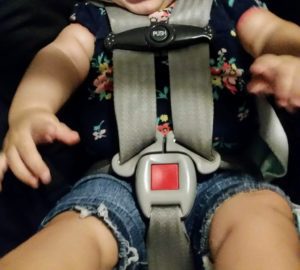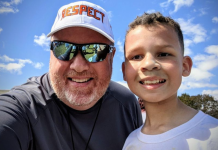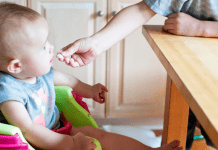I really appreciate how a friend of mine spoke up about how I’d incorrectly buckled my son into his car seat. He was 6 months old by then, and we had done so much driving… I literally cringe when I think about it.
There’s SO much to learn when we become new moms. There’s the feeding, changing, swaddling, calming, burping; and then there’s all the gear. Especially for the first one… ha! However, that car seat is the most important piece of equipment your family will depend on through all of those big milestones. Here are a few things I recently learned that give me confidence and peace of mind on these crazy South Florida roads:
Rear Face As Long As Possible
Historically, the standard guideline for how long to rear face was until at least 2 years of age; but based on current research, safest practices actually recommend rear-facing as long as possible, until they reach the weight or height limit of their seat. A very young child’s neck and spine are simply not mature enough to handle the force of a rear impact. Rear-facing seats provide the support and protection their little bodies need so that their necks do not snap forward and cause damage to their spines. It’s really just a matter of using physics to our advantage, which I think is kinda cool!
Five-Point Harnesses
These babies are gold. With the chest clip at armpit level and the hip and shoulder belts pulled snug, these provide some of the best protection for our children regardless of the type of seat they’re in. Harnessed seats are best for babes ages 0 until they’re at least 5, and mature enough to sit properly. And because they have such an important job, we need to handle them with care. When messes and vomit do happen, be sure to follow the cleaning instructions outlined in the user’s manual, or contact the manufacturer. Hosing them down with water actually compromises their integrity and ability to function properly in the event of a crash. Yikes.
Car Seat Expiration
Every car seat has a little sticker that includes the manufacturer’s information, as well as a date of manufacture and/or expiration date. Car seats and boosters all have varying shelf-lives; but all materials break down over time, especially with constant exposure to the extreme temperatures inside of a vehicle. I find it helpful to periodically check the dates so that I can plan ahead to replace them.
Replacement Seats
If your car seats are ever in a vehicle at the time of an accident, they should be replaced. The good news: many insurance carriers will reimburse you for the cost of a new seat! Even if the car seat appears to be okay, there may be invisble damage to the materials and function of the seat.
Helpful Resources
There are some amazing resources out there that are dedicated to the safety of child passengers! One of my favorites is Car Seats for the Littles. This site is SUPER helpful, and includes tons of information about types of seats, best practices, recalls, and best buys. This little chart right here is something I reference often. There’s also The Car Seat Lady, who offers some unique things like family vehicle buying guides, and seating charts for using LATCH (Lower Anchors and Tethers for Children) systems in vehicles with third-row seating. For local in-person inspections, Safe Kids and the Injury Free Coalition For Kids offer car seat checks by appointment in English, Spanish, and/or Creole.
So get out there! Miami is a great place to live with so many wonderful things to do and see with your kids. Back-to-school season is a great time to check on those car seats 😉
